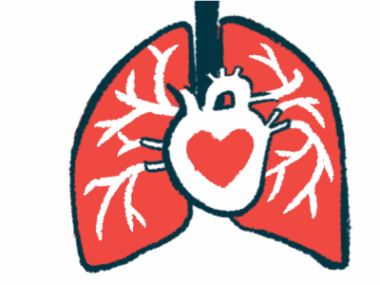No Increased Risks After Heart Transplant in Cardiac Sarcoidosis
Written by |

The risks of death and rejection after heart transplant for people with advanced cardiac sarcoidosis were similar to those of patients who had transplants for other types of heart disease, according to an analysis of a transplant recipient registry.
These findings suggest that a heart transplant is a safe and effective option for late-stage cardiac sarcoidosis patients, the researchers reported.
“We found no difference in short- or long-term mortality and other post [heart transplant] outcomes,” they wrote.
The analysis was published in the journal ESC Heart Failure, in the study, “Outcomes after heart transplantation in patients with cardiac sarcoidosis.”
In sarcoidosis, an over-active immune system leads to the formation of clumps of inflammatory immune cells, called granulomas, in different tissues and organs. Over time, these granulomas can become calcified or bone-like, causing permanent damage.
When it involves the heart — cardiac sarcoidosis (CS) — abnormalities in electrical conduction, irregular heartbeats, and heart failure can occur. As the disease progresses, scar tissue forms, requiring more advanced treatments such as a heart transplant.
Case reports suggest that a heart transplant is a feasible and effective option for people with late-stage cardiac sarcoidosis. A previous heart transplant study, involving 148 cardiac sarcoidosis patients and more than 30,000 patients without this rare disease type, showed similar outcomes.
Now, a team led by researchers at the Mayo Clinic, in Minnesota, investigated the short- and long-term outcomes of heart transplants in a more recent group of cardiac sarcoidosis patients.
“To our knowledge, this is the largest cohort [group] used to examine outcomes of patients with CS undergoing [heart transplant],” the researchers wrote.
Data were collected from the United Network for Organ Sharing (UNOS) scientific registry of transplant recipients. The team identified 239 cardiac sarcoidosis patients who underwent a heart transplant between 1990 and 2020 in the U.S. These patients had a mean age of 52.2, and 64% were male.
As a comparison, investigators included some 1,400 heart transplant patients with non-ischemic restrictive cardiomyopathy and more than 28,000 with non-ischemic dilated cardiomyopathy.
Non-ischemic restrictive cardiomyopathy includes all causes of reduced heart function, other than those caused by heart attacks or blockages in the heart’s arteries (ischemia). Non-ischemic dilated cardiomyopathy refers to a heart muscle disease that causes the left ventricle to stretch abnormally, preventing the heart from pumping blood effectively.
The analysis showed the incidence rate for all-cause mortality, or death by any cause, was 5.3 per 1,000 patient years — summing of all events divided by time — for those with cardiac sarcoidosis, 6.8 for patients with non-ischemic restrictive cardiomyopathy, and 5.9 in non-ischemic dilated cardiomyopathy cases.
The median survival for cardiac sarcoidosis heart transplant patients was 15.8 years, 13 years for non-ischemic dilated cardiomyopathy, and 11.7 years for restrictive cardiomyopathy.
In a simple statistical calculation, the all-cause mortality rates of cardiac sarcoidosis patients were not different compared with either cardiomyopathy comparison group.
A more complex statistical calculation was then performed, adjusted for factors that may influence the results, including age, ethnicity, having diabetes, body fat content, and first treatments. Other factors such as ECMO treatment — which pumps blood through an artificial lung and back — mechanical ventilation at the time of transplant, and heart donor age and gender all were also taken into account. Here, all-cause mortality rates remained similar across all three groups.
While 30-day mortality did not change significantly over time, there was a trend toward reduced mortality rates after one year in those who had transplants more recently. Specifically, the rates were 26.7% between 1990 and 1999, 18.2% between 2000 and 2009, and 9.4% between 2010 and 2020.
Overall, 4% of patients died within 30 days of transplant, and 10.3% died within one year. An adjusted analysis showed no mortality rate differences across all three groups at 30 days and after one year.
Among a group of 163 cardiac sarcoidosis patients, 32 (19.6%) experienced tissue rejection within the first year after transplant. The adjusted analysis demonstrated the risk of rejection in cardiac sarcoidosis patients was similar to that of the other two transplant groups.
Although cardiac sarcoidosis participants were admitted to the hospital less often for acute rejection (19.8% vs. 28.9% in dilated and 21.4% in restrictive cardiomyopathy groups), an adjusted calculation showed the risk of hospitalization for organ rejection was similar across all three groups.
Rates of hospitalizations for any infections also were similar regardless of the heart condition, as were those for post-transplant lymphoproliferative disorder — the most serious complication of a transplant due to a suppressed immune system.
Finally, severe transplant failure causing death in the first 30 days after heart transplant did not differ significantly among groups. There was no increased risk of death from transplant failure in the first 30 days in adjusted analysis.
“This analysis of the UNOS Registry showed that short-term and long-term all-cause mortality and rejection risks after isolated [heart transplant] were not inferior in sarcoid cardiomyopathy as compared with other common types of non-ischaemic cardiomyopathy,” the team concluded.
“These data suggest that [heart transplant] can be safe and effective in this growing patient population with advanced [heart transplant] due to CS,” they added.






